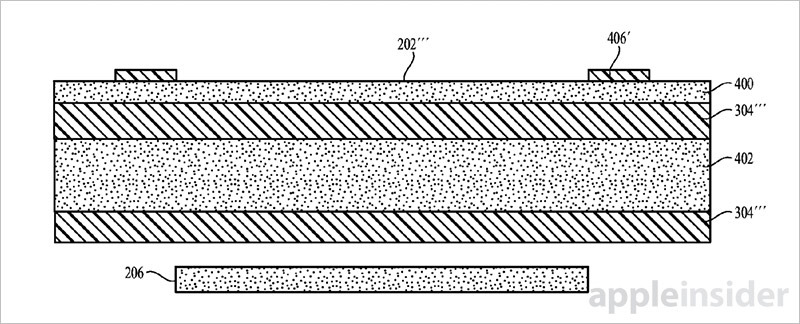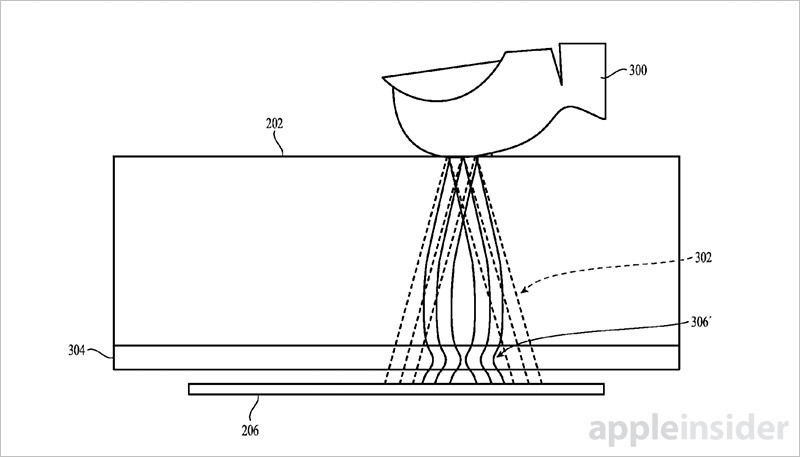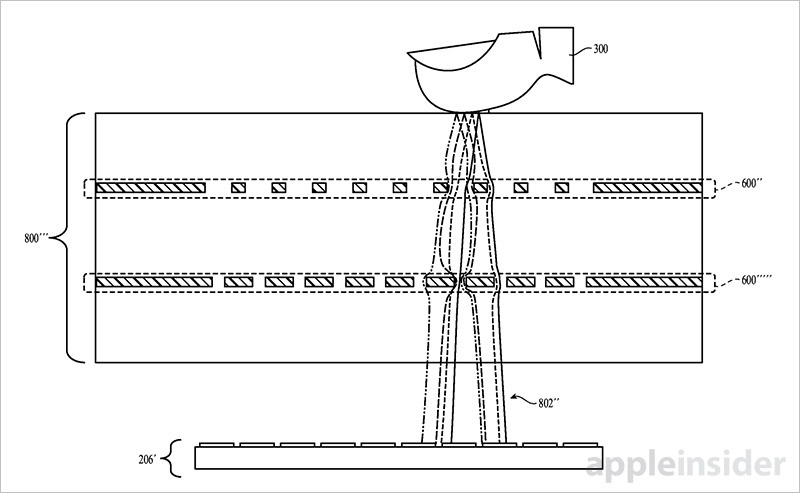Apple on Tuesday was awarded a patent that, if recent rumors are to be believed, might make its way into next year's iPhone model. Specifically, the company now owns IP covering a fingerprint sensor capable of gathering accurate readings through structures like a device screen.
As published by the U.S. Patent and Trademark Office, the tech described in Apple's U.S. Patent No. 9,460,332 for a "Capacitive fingerprint sensor including an electrostatic lens" offers a solution to a major design hurdle presented with the rumored design of next year's iPhone.
According to reports, the 2017 iPhone will do away with the iconic home button to make way for a "full-screen face" comprised of an edge-to-edge OLED display. Instead of the physical Touch ID module seen in contemporary iPhone and iPad devices, Apple is said to be working on a virtual button which presumably carries over the same features and functions.
The home button has been a mainstay of Apple's portable device lineup since the first iPhone launched in 2007. Initially mapped to execute a "return to home" command, home button functionality has expanded to invoke Siri and control security via an embedded Touch ID fingerprint sensor.
Software commands can be easily replicated with graphical buttons (or through a press on modern 3D Touch screens), but how Apple planned to integrate now-standard Touch ID fingerprint technology into a handset lacking a home button was unclear. Today's patent overcomes design hurdles by introducing capacitive sensing technology that works through gaps in space, thereby allowing a future Touch ID module to sit behind iPhone's display.
With common fingerprint sensors, separation between the contact surface where a user places their finger and the capacitive sensing array results in a blurring of the finger's electric field. This can lead to degraded fingerprint image resolutions and decreased recognition accuracy.
To alleviate blurring caused by gaps, Apple proposes the use of electrostatic lenses, which are simply described as one or more patterned conductive layers. Depending on their position, relative voltage and shape, however, the layer or layers are able to shape or bend the electric field associated with a user's finger. This bending can in some cases offset the natural dispersion a finger's electric field experiences as it passes through a dielectric layer or space.
 Illustration of electrostatic lens (202) with patterned conductors (601), openings in conductor and conductive rings (612) positioned above a sensing element (206).
Illustration of electrostatic lens (202) with patterned conductors (601), openings in conductor and conductive rings (612) positioned above a sensing element (206).As explained by Apple, electric fields associated with particular points on a finger can be illustrated as a cones. From a contact surface, these cones spread out from their respective apices and commingle with each other, causing the blur mentioned above. Continuing forward with the example, electrostatic lenses are tuned to receive an unshaped cone and produce shaped versions that are subsequently spread across an array of sensing elements to achieve an accurate image of a user's fingerprint.
There is one caveat to the electrostatic design, however. Apple notes a drive ring is needed to supply a AC or DC voltage to a user's finger, electrically coupling the digit and providing a predetermined potential difference between it and the sensing array. A similar solution is used in existing Touch ID hardware.
 Cross section of capacitive sensor array (206), electrostatic lenses (304), display stack (402), cover glass (400) and drive ring (406) in one embodiment.
Cross section of capacitive sensor array (206), electrostatic lenses (304), display stack (402), cover glass (400) and drive ring (406) in one embodiment.The document goes on to detail a host of possible system configurations, from single-pattern solutions to installations with multiple sensors. Most importantly, the patent covers a scenarios in which an electrostatic lens is used to refine blurring caused by interrupting internal components like displays.
It is unclear if Apple plans to deploy electrostatic lenses in a future iPhone, or if a version of the tech is already present in current Touch ID iterations, though the IP does go a long way in bringing the "full-screen face" design to life.
It is perhaps more likely that today's patent is just one piece of a larger puzzle, as hiding a fingerprint sensor behind a handset screen would require numerous enhancements over contemporary technology. For example, to create a clean display surface, Touch ID's drive ring must be completely integrated with, or more likely deleted from, the display cover glass.
Apple's electrostatic lens patent was first filed for in September 2014 and credits Jean-Marie Bussat as its inventor.
 Mikey Campbell
Mikey Campbell








-m.jpg)






 Christine McKee
Christine McKee
 Marko Zivkovic
Marko Zivkovic
 Mike Wuerthele
Mike Wuerthele

 Amber Neely
Amber Neely
 Sponsored Content
Sponsored Content
 Wesley Hilliard
Wesley Hilliard










29 Comments
Cant innovate anymore, my a$s
Samsung will now attempt to market it first and use Apple's patent drawings in its own filings, it will barely function, and Samsung shills and Fandroids will claim Apple is just a "follower".
So, even if Apple filed this patent back in 2014, with them finally being awarded the patent now, what are the chances this technology actually gets implemented into iPhone 8 (if next year's isn't an S but actual 8)? Does Apple start developing and use technologies they haven't gotten a patent on?